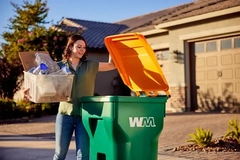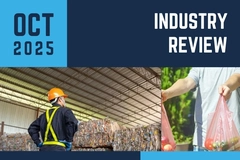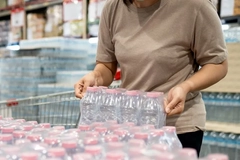Study reveals hormone-disrupting and metabolic risks in plastic food packaging
20 Aug 2024 --- A research team from the Norwegian University of Science and Technology (NTNU) is raising alarms about the safety of food packaging after discovering “thousands of chemicals” in plastic products. Among these chemicals are several that are known to affect hormones and metabolism.
The study, which examined the packaging of sausages, blueberries, cheese and yogurt from five countries — US, Germany, South Korea, the UK and Norway — found a staggering array of chemicals, many of which pose potential health risks.
Martin Wagner, a professor at NTNU’s Department of Biology, tells Packaging Insights: “Our research shows that many chemicals are present in plastic food contact materials from multiple countries. Indeed, many of these chemicals in plastics remain unidentified. Thus, their safety cannot be assessed or ensured.”
“To investigate further, we assessed the toxicity of these complex chemical mixtures and found that many plastic products contained toxic chemicals that can disrupt hormone signaling and metabolic processes. Such chemicals should be avoided to reduce the risk of exposing consumers to toxic compounds.”
Minimizing risks with recycled materials
The study, published in Environmental Science & Technology, identified unique chemical “fingerprints” in the packaging of different food products, with one sample containing 9,936 distinct chemicals. According to the research, products that contained fewer chemicals were also found to contain fewer harmful substances.
The researchers were particularly concerned about the presence of thousands of unknown chemicals in the packaging investigated, some of which could be harmful.
“Removing known toxic chemicals is the first step to improve the safety of food contact materials. Many of these chemicals are known and should be replaced with safer alternatives, given that these are rigorously tested,” highlights Wagner.
 Researchers find chemicals can leach into beverages and fatty foods such as cheese and yogurt.“Another important way to improve food contact materials is to reduce their chemical complexity, by using monomaterials, for instance, and by reducing the number of chemicals that are intentionally added to such materials.”
Researchers find chemicals can leach into beverages and fatty foods such as cheese and yogurt.“Another important way to improve food contact materials is to reduce their chemical complexity, by using monomaterials, for instance, and by reducing the number of chemicals that are intentionally added to such materials.”
In response to the study findings, professor Edward Kosior, founder of Nextek and Nextloopp, tells Packaging Insights: “In countries that are not regulated or where regulations are not enforced, contamination is a possibility due to unqualified practices being used.”
“This means that materials being imported into countries with controls should always be validated that they comply with stringent safety standards no matter where they are used.”
Kosior advocates for the use of recycled plastics, emphasizing that they undergo a pre-approved recycling process designed to effectively remove any external contamination.
“The use of recycled plastics for direct food contact is tightly regulated and only food-grade packaging can be used as input materials. The recycled materials are suitable for direct food contact if all the appropriate regulations are followed.”
Collaborative efforts for better health
According to scientists, the overall composition and toxicity of chemical mixtures in real-world plastic products still need to be better understood. Although the research did not specifically examine whether these chemicals migrate from packaging into food, the scientists believe it is likely.
In a previous study, Wagner and his team studied 24 everyday plastic items made from different types of plastic to see what chemicals they release into water. The scientists found that these products release far more chemicals than previously anticipated, including some that were toxic in lab tests.
Some of the chemicals found in plastics, such as bisphenols and phthalates, are already known to have adverse health effects. Chemicals found in packaging, food, water, air and personal products may lead to problems that can be passed down through generations, according to an animal study by the Endocrine Society.
“I think the food industry has a key role to play in improving the safety of packaging. It has the means to remove toxic chemicals in packaging across supply chains, thus improving the safety and circularity of packaging and other food contact materials. This would improve its environmental footprint, consumer trust and public health,” says Wagner.
Meanwhile, Kosior believes that brand owners and recyclers share the responsibility of ensuring that high standards are consistently upheld in recycled plastics. He notes harmful chemicals regulated by EU and US statutes should never be used in food contact applications.
“Materials that are harmful must not be present in food contact recycled plastics and proof is frequently demonstrated by chemical analysis to ensure that chemicals such as SVHC, heavy metals, pesticides, BPA, phthalates, PAH and others are not present below stringent standards.”
“The safety of the packaging will not be compromised if approved additives are used as specified in the food safety regulations. Nextek, through it is Nextloopp project, has extensively studied the residues in post-consumer plastics and the decontamination performance of its decontamination and recycling process to ensure that the recycled plastic is compliant with the key safety authority requirements, namely EFSA and US FDA.”
By Sichong Wang












